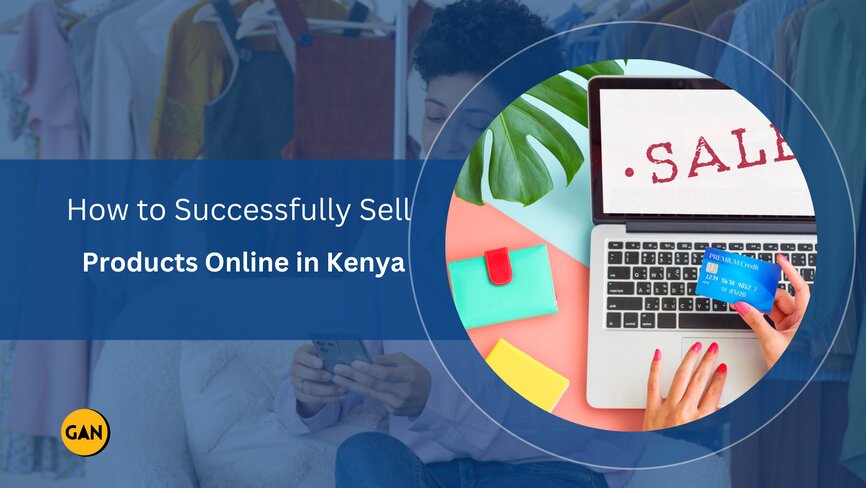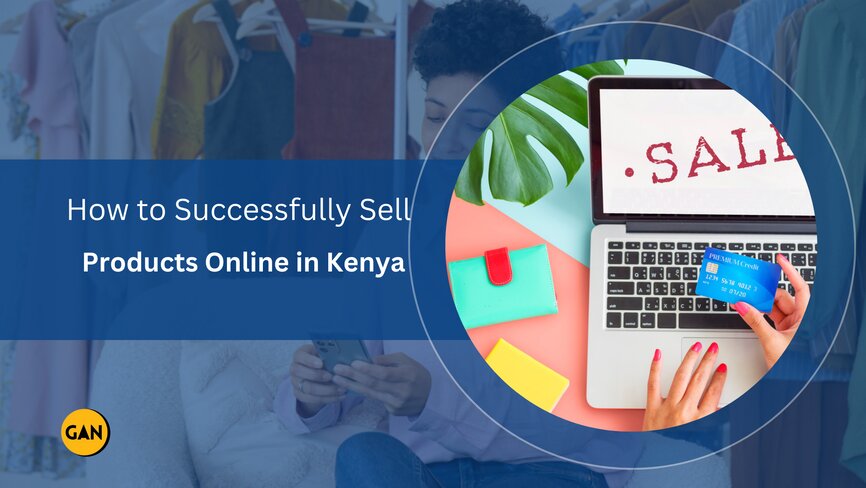
Kenya’s internet market is expanding quickly. You can now work from home and sell your goods to customers all over the nation. This is e-commerce’s power. It’s altered the way Kenyans purchase. Today, they look things up online first, whether it’s to read reviews or compare pricing.
Can you imagine purchasing without first comparing pricing, ratings, and reviews online? Due to e-commerce, this is now standard procedure. It gives vendors access to a big market. It gives both seasoned and inexperienced business owners an equal opportunity. You don’t need a physical store to expand and attract new clients.
Kenyan internet shoppers are expanding quickly. With almost 50 million Kenyans now online, trade has become easier. Leading websites in this virtual market are Konga, Kilimall, and Jumia.
Kenyans shop a lot using their phones. They shop about and compare costs. Companies need to have mobile-friendly websites and apps. E-commerce in Kenya is expanding. M-Pesa and other safe mobile money services are responsible for this surge. They improve trust and ease of use. Before making an internet sale, thoroughly grasp your target. This is essential for Kenyan e-commerce to succeed.
Why You Should Sell Online In Kenya
Online sales offer a lot of advantages in Kenya. Both corporations and individual sellers can benefit immensely from them.
Wide Market Reach
There are currently more Kenyans with internet connections. This makes selling products online a wise choice. It enables you to access a large market. Both urban and rural residents can now purchase from you. In areas with a shortage of actual retailers, this is extremely helpful.
24/7 Availability
You can advertise goods and services online around the clock. Customers are now able to shop anytime they wish. Unlike physical establishments with set hours, this can lead to an increase in sales.
Lower Overheads
It costs less to open an online store than a physical one. Rent, utilities, and employee costs are reduced. This increases your earnings.
Increased Convenience
Online transactions are advantageous to buyers and sellers alike. With internet connectivity, sellers may run their companies from any location. Without visiting a business, customers can explore and make purchases.

Global Market Access
Online sales extend outside your local community. Also, it creates chances for international clients. Kenyan sellers might join the international market with the aid of astute marketing and prompt shipping. They can expand their clientele.
Data-Driven Insights
Platforms for online sales offer information on consumer behavior, tastes, and purchasing patterns. They make use of analytics software. Companies can then improve their pricing, products, and marketing. Better outcomes follow from this.
Ease of Scaling
A physical store is more difficult to grow than an online one. Solid e-commerce and logistics are first and foremost. To fulfill demand, you can then swiftly grow online.
Payment Convenience
There are several ways to pay when selling online. These consist of digital wallets, credit/debit cards, and M-Pesa. Having a variety of options makes purchasing easier. Additionally, it increases sales.

Adaptability to Trends
Online channels enable vendors to adjust swiftly to consumer tastes and trends. In reaction, they can launch promotions, change prices, and update their product lineup.
Strategic process to set up an effective and profitable online store
Step 1: Find the Right Product to Sell
Right from the start, selecting a strong product is essential since you need something with a good level of demand and profit potential. To find opportunities, gaps, and target markets, conduct in-depth market research. Think about the market’s size, anticipated growth, consumer patterns, demographics, and degree of competition. Consideration should be given to production costs, prospective prices, shelf life, distinctiveness, shipping issues, and initial investment when evaluating product concepts. Choose a product that delivers respectable profit margins, lets you stand out from the competition, and has a current market.
You can leverage several free tools when conducting product research and evaluating customer demand. Here are some popular options:
- Google Trends: Explore search trends and compare keyword popularity over time to gauge growing customer interest
- Google Keyword Planner: Gather data on KW search volumes, competition, and related keywords to identify potential opportunities
- Amazon Best Sellers: Discover top-selling products in various categories to understand market demand on one of the biggest marketplaces in the world
- eBay Trending Items: Identify trending products and categories based on recent buyer activity from an online retail giant
- Online Forums and Communities: Engage with relevant forums, Reddit, Quora, and specialized communities to interact with potential customers and understand their needs
Rather than just chasing general demand, focus on products that solve a specific customer problem or need. Fulfilling an unmet need better than competitors gives your business a meaningful edge. If creating a physical product seems initially complex, you can explore alternatives like dropshipping, print-on-demand, digital products, or affiliate marketing. These options have lower barriers to entry and can be ideal for beginners.
Step 2: Choose the Right Online Sales Channel

Once you have a product, selecting the right online sales channel is crucial to reach your target audience effectively. Here are three main avenues to consider:
1. Build Your Online eCommerce Store
Firstly, creating your custom website for an eCommerce online store gives you the most control and flexibility over the shopping experience. WordPress or website-building platforms like Wix or Shopify offer easy do-it-yourself options.
Pros of Building Your Online Store:
- Build your brand: With your online store, you have the freedom to create a unique brand identity, customize the user experience, and tailor every aspect of your store to match your vision.
- Customize experiences: You can optimize your website for maximum conversions by implementing specific design elements, personalized product recommendations, and seamless checkout processes.
- Own customer data: Having your online store allows you to gather valuable customer data, such as purchase history, preferences, and contact information, which can be used to build long-term relationships and personalize marketing efforts.
Cons of Building Your Online Store:
- Higher upfront effort: Setting up and managing your online store requires more initial effort, including website design, technical setup, and ongoing maintenance.
- All tech/marketing tasks fall on you: As the owner of your online store, you’ll be responsible for managing technical aspects like hosting, security, and updates. Additionally, your responsibility is to drive traffic, implement SEO strategies, and run promotions.
2. Use Established eCommerce Marketplaces
Secondly, utilizing established e-commerce marketplaces like Amazon, eBay, or Etsy provides instant access to a large consumer base and pre-existing technology to do it. Pros of Using eCommerce Marketplaces:
- Instant access to millions of buyers: You tap into their massive user bases by selling on established marketplaces, increasing your product’s visibility and potential customer reach.
- Built-in tools and infrastructure: Marketplaces often offer robust tools for managing inventory, handling payments, and streamlining shipping processes, saving time and effort.
Cons of Using eCommerce Marketplaces:
- Limited brand control: While marketplaces provide exposure, you have limited branding and customer experience control. Your store’s appearance and messaging will conform to the marketplace’s guidelines and layout.
- Marketplace fees per sale: When selling on established platforms, you’ll typically incur fees per sale or a percentage of each transaction, impacting your profitability.
3. Use Social Commerce Platforms
Lastly, social commerce allows you to sell directly on social media platforms like Facebook and Instagram Shops. Pros of using social commerce:
- Tap into captive, loyal audiences: Social media platforms have millions of active users, presenting an opportunity to reach and engage with a large and captive audience.
- Native mobile experiences: Social commerce provides a seamless shopping experience for users on their preferred devices since social media platforms are primarily accessed through mobile devices.
- Built-in advertising tools: Social commerce lets you tap into channel-based advertising optimized for the platform’s users. Advertising doesn’t get simpler.
Cons of using social commerce:
- Limited product showcasing and branding capability: Selling through social commerce limits your ability to showcase an extensive product catalog or customize the shopping experience to the same extent as with your online store.
- Limited data collection: The social media giant owns everything, meaning all the convenience is non-tangible if you decide to leave it.
4. Consider a Hybrid Model
A hybrid model that combines elements of an owned online store, marketplace presence, and social commerce can maximize your reach and sales potential. You can leverage the advantages of each approach while hedging against each of their respective limitations.
Many brands have their eCommerce stores where they sell products online, tap into social commerce experiences, and sell their wares on known marketplaces. We’d recommend that you choose one and master it. The advantage of creating your eCommerce store is that integrations abound that can connect your store with both social platforms and 3rd party marketplaces.
These integrations easily push your products and store data to these other channels—cutting down on individual platform management. This lets your eCommerce store be the central hub through which you run your entire business.
Step 3: Set Up an Online Store
There have never been so many options to start selling products online. We’ll give you the general steps to take for building a store with WooCommerce or Shopify and becoming a seller on Amazon. Sell Products with WooCommerce + WordPress WooCommerce is an infinitely extendable platform that allows you to build a customized online store. Here’s a high-level overview of the steps involved:
- Get a Domain: Choose a domain name that reflects your brand and is easy for customers to remember. Here’s how to purchase a domain.
- Get Hosting: Select a reliable web hosting provider to support your online store’s needs. We recommend that beginners use Truehost Cloud to make domains and hosting easy. (See our Siteground review)
- Build the Website: Utilize WordPress’s eCommerce plugins like WooCommerce to add product listings, set up secure payment gateways, and configure shipping options.
- Design Freely with Divi: Customize the design and layout of your whole site to match your vision—even on the cart, product, and other theme-designed pages.
- Extend with Plugins: Extend the functionality of WordPress and WooCommerce with the best plugins for WordPress.
Using an eCommerce Marketplace (like Amazon)
Another option is to leverage existing eCommerce marketplaces like Amazon, eBay, and Poshmark. Using an eCommerce marketplace allows you to tap into an existing customer base and benefit from built-in infrastructure.
However, remember that you’ll have less control over the branding and customer experience compared to having your online store.
Step 4: Market Your Online Store
Once your online store is set up, you need to market it to attract customers. Once your store is built, your day-to-day shifts to marketing tasks.
Key strategies to employ:
- Search Engine Optimization (SEO) -Optimize your website’s content and structure to improve its visibility in search engine results. Target relevant keywords and create informative, keyword-rich product descriptions and blog posts to attract organic traffic.
- Social Media Marketing – Leverage social media platforms like Facebook, Instagram, and Pinterest to promote your products and engage with your target audience. Create compelling posts, share visually appealing images, and utilize social media advertising to expand your reach
- Email Marketing – Build an email subscriber list by offering incentives like discounts or exclusive content. Regularly send newsletters, promotions, and personalized recommendations to nurture customer relationships and drive repeat purchases.
- Influencer Marketing – Collaborating with relevant bloggers, YouTubers, or social media influencers in yonts and product reviews can significantly boost your brand’s visibility and credibility. ur niche to reach their followers and leverage their influence. Influencer endorsement
- Paid Advertising – Utilize platforms like Google Ads and Facebook Ads to run targeted ad campaigns. These platforms allow you to reach specific demographics, interests, and behaviors, ensuring your products are shown to potential buyers.
Step 5: Offer Outstanding Customer Service
Provide your customers with 5-star experiences through every touchpoint. Exceptional customer service keeps buyers happy and encourages repeat business and referrals. Critical elements for customer service:
- Respond quickly to customer questions and concerns through chat, email, or social media. Address pre-sales questions to help potential customers make informed decisions and provide post-purchase support to ensure a smooth experience.
- If customers encounter any purchase issues, simplify the return and refund process. Clear return policies and hassle-free procedures will instill confidence and encourage repeat business.
- Provide regular order status updates and shipping notifications through email and readily available on your website.
- Automated assistance via live chat services or chat plugins is one of the best ways to use AI for 24/7 self-service.
- Encourage customers to leave ratings, reviews, and testimonials about their experience with your products and services. Display these social proof elements on your website to build trust and confidence among potential buyers.
- Delightful surprises like handwritten notes create a personal touch.
The extra effort pays dividends in lasting loyalty and word-of-mouth marketing. Top-tier customer service can differentiate you from competitors and create a loyal customer base that supports your business in the long run.
Step 6: Continuously Optimize Your Approach
Selling online requires an agile, iterative mindset. Continuously test and refine your strategies based on data insights and customer feedback.
- Review analytics regularly and double down on what works.
- Adapt quickly to shifts in market demand or industry trends.
- Seek customer input to guide improvements via surveys and regular customer interaction.
- A/B test promotions, design, and copywriting to get the most potent mix possible.
- Automating order fulfillment, inventory management, and customer support can save time and increase efficiency.
- Explore emerging technologies to enhance experiences.
Final Thoughts on Selling Online In Kenya
Selling online in Kenya is quite competitive, and it requires you to keep on learning as new techniques emerge each day. Once you learn the ropes of online selling in Kenya, you will enjoy selling your products online.
Keep in mind that money begets money and reinvest it back into your business when things go well. Selling online may not be easy and you will need to be patient as you learn and try different methods of doing everything from displaying your products, selling them, advertising to packaging and delivery.






